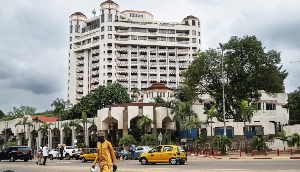Cameroonian communities’ rights are recognised and protected in laws and regulations including the land laws, forestry law, the framework law on environmental management, and the mining code.
Communities also claim customary land rights as property rights. The government of Cameroon has demonstrated its interest and openness to clarify and strengthen local land rights.
Yet activists say only an inclusive and participatory mapping of resources and land uses and territories are tools can facilitate the identification of customary uses of land and resources, including natural landscapes.
It is for the above reason that Rainbow Environment Consult, a Yaounde-based rights group conceived a project to develop a common community mapping protocol in Cameroon which aims to secure the adoption of common mapping protocols by government agencies responsible for the application of relevant land laws and ordinances.
A workshop to launch the project in Yaounde recently brought together several stakeholders including representatives of government ministries, funding partners and civil society organizations.
Explaining the initiative, Dr. Timothee Fomete Nembot, associate director of Rainbow Environment Consult and Technical coordinator of the project, explained that communities’ land is still an unsolved issue in Cameroon, and the lack of mapped boundaries contributes to the escalation of conflicts between communities.
“Cameroon has already laws but the laws are not fully implemented including Territorial Administration when it comes to boundaries, but there is no one better than the communities themselves to say where their village land begins and ends, and how it can be used,” Dr. Fomete Nembot said.
Working within the framework of an advisory committee which is coordinated by the Ministry of the Economy, Planning and Regional Development with other government ministries like that of State Property, Surveys and Land Tenure, Agriculture and Rural Development, etc, the technical coordinator said they intend to make sure all communities have the maps so that when investors come in need of land for development, it will constitute a good base for dialogue.
“Once an investor is coming into a village or community with a map, they will immediately put the map before the investor. This will check conflicts that accrue when investors acquire land from a given community for a project and at implementation, a problem arises on land ownership,” Dr. Fomete Nembot explained.
Cognizant of the existence of similar methodologies, the technical coordinator said are not inclusive. He justified that when someone has a project dealing with women for instance, he comes to a community and consults only women and the next community is not aware— saying they are going to conduct a rigorous technical review of existing community mapping methodologies, together with all stakeholders come up with consensual methodology that will make maps reflect the views of the communities.
In separate presentations, the director of the Center for Environment and Development (CED), Samuel Nguiffo, suggested current customary laws do not clearly define communities’ territorial boundaries.
A senior official of the Ministry of State Property, Surveys and Land Tenure, Guy Patrice Dkamela said many of such initiatives do exist and have seen the mapping of several villages.
On behalf of the Minister of the Economy Planning and Regional Development, Prof Bertin Sooh F. who chaired the launching ceremony, said the initiative is in line with Cameroon’s development vision as elaborated in the Growth and Employment Strategy Paper.
Actualités of Monday, 8 February 2016
Source: edennewspaper.net













